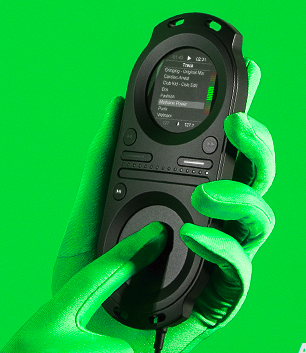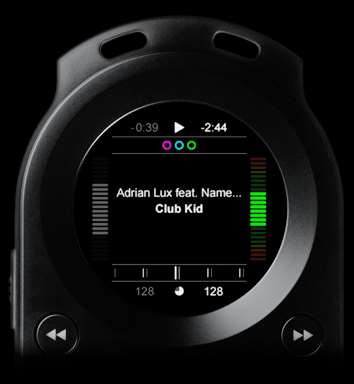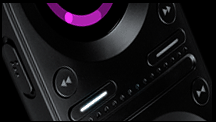 Everybody wants to be a DJ. Ever since the first iPod, DJ’s have been waiting for the ability to mix from a handheld. Jobs, in all his wisdom, never saw fit to allow tempo changes so that tracks could be seamlessly mixed. There have been a couple of interesting attempts, including two notable mixers from Numark, but nothing as portable as an iPod. Enter the Pacemaker from Tonium. It’s like 2 turntables, a mixer, and an iPod had a wild night together and the result is this beautiful and brilliant device.
Everybody wants to be a DJ. Ever since the first iPod, DJ’s have been waiting for the ability to mix from a handheld. Jobs, in all his wisdom, never saw fit to allow tempo changes so that tracks could be seamlessly mixed. There have been a couple of interesting attempts, including two notable mixers from Numark, but nothing as portable as an iPod. Enter the Pacemaker from Tonium. It’s like 2 turntables, a mixer, and an iPod had a wild night together and the result is this beautiful and brilliant device.
The Pacemaker is a hard drive based music player that allows you to do almost everything that a complete DJ setup would in a device about as tall as a soda can and about as thick as a deck of cards. It has an LCD screen and a touchpad. Separate headphone and line outs so you can preview your mix before the party hears it. You can adjust track speed to seamlessly mix two tracks without changing the pitch. There is a visual display to assist with beat-matching or you can let the Pacemaker match the beats for you. There is an EQ and effects that can be applied separately to each track and a kill switch to toggle them on and off. You can create loops and edit them in real-time. The list goes on.

Using the Pacemaker seems a bit confusing at first, but after a few minutes, it feels completely natural. In the center of the device are two buttons that control which channel you are manipulating. Press the left button to activate channel one. Double tap the touch pad on the bottom of the device to open your song library. Browse the entire library or filter by genre, BPM, custom lists called cases, etc. Pick the track you want and start playing it on channel one. Switch over to channel two. Open the library again and find your next track. With the cross fader fully on channel one, start playing the new track on channel two in your headphones. Skip ahead and find a good point to mix it in. Hit the cue button to save the cue point. When the time is right, start playing the track on channel 2. The Pacemaker will show you a visual representation of the beats of both tracks so you can easily see if they match. If they are off, adjust the pitch until the speeds are the same and then tweak the tracks until they line up or hit a button and the Pacemaker will match them for you. When everything sounds good, mix the tracks with the touch-sensitive cross fader. Fade out the track on channel one and start again. It is extremely simple. This is my new favorite gadget.

I won’t get into the controls with any more detail because it would just be confusing. In fact, because each control serves 2 functions and you have to use an up/down toggle switch to access all of the features you’ll need to do basic mixing, the instructions sound difficult and unintuitive. The reality is the exact opposite. After a few minutes of mixing and a few glances at the manual, I just did what I needed to do. I wasn’t thinking about how to operate the Pacemaker, just about making music.
The Pacemaker handheld is also paired with a desktop app (mac and PC compatible) that does the heavy lifting of analyzing tracks for the BPM, allows you to create custom lists, called cases, and transfers tracks to the Pacemaker. You can also create mixes directly in the app, but you can’t yet export those mixes directly to the Pacemaker. Even if you could, I think that would miss the point of the desktop app. A set should be ‘live’ for a party. The desktop app lets you experiment with what tracks go together well. It lets you preset cue points. It allows you to perfect your set before you’re in front of a screaming crowd. Still, making mixes is fun and you can download the desktop app from Pacemaker.net even if you don’t own the device. When you create a mix that you like, you can upload it so the world can hear your genius.
I’ve been using the Pacemaker almost every day for the last two weeks. I mix my own personal soundtrack every day on the train ride home from work. It is so much more fun than passively listening to music.
The original Pacemaker packs a 120GB drive, power and audio cables and, although it is an amazing device, is a bit pricey at $699. The newly announced model 666 knocks $100 of of the price and comes with fewer accessories and a 60GB drive. It will be available May 1. $599 still seems like a lot considering what we are used to paying for our portable music players, but can you really put a price on cool? Apparently, you can. It’s $599.
[UPDATE] I’m told that while the MSRP is $599, it will likely be widely available for $499.
[PSGallery=4xlk0tewkw]